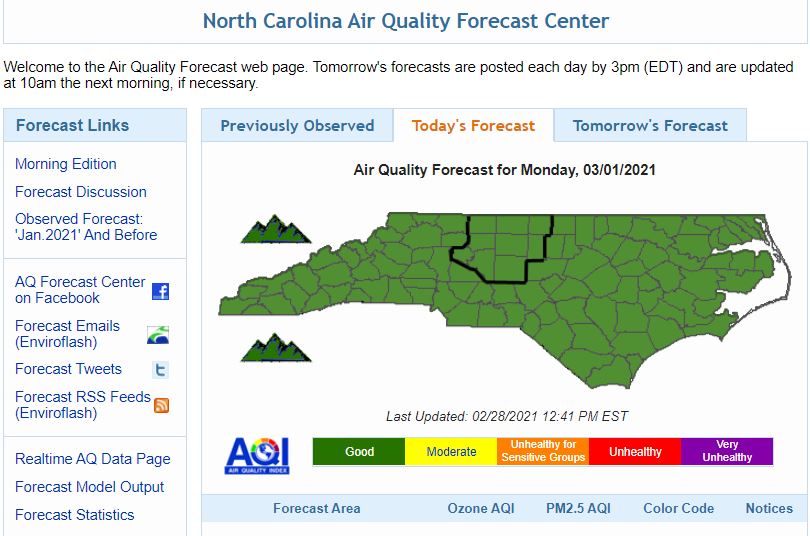
The 2021 ozone season started Monday. From now through Oct. 31, daily air quality forecasts for ozone will be posted with year-round forecasts for fine particle pollution on Division of Air Quality’s website, Twitter feed, Facebook page or the AirNow site.
Next-day and extended forecasts are issued by 3 p.m. with a morning update by 10 a.m. The forecast is automatically saved every 15 minutes.
Supporter Spotlight
Ozone forms in the air when nitrogen oxides, or NOx, react with hydrocarbons on warm, sunny days with little wind. While it was once North Carolina’s most widespread air quality concern and contributor to breathing problems, ozone continues to decline due to steady reductions in emissions from its primary air pollution sources: power plants, industry and motor vehicles. North Carolina has been in statewide attainment with the federal ozone standards since 2017. EPA designated North Carolina as attaining the 2015 ozone standard statewide, according to the state.
The Air Quality Division also developed the Ozone Design Value Predictor Tool, a web-based mapping tool that displays maximum eight-hour ozone and Design Value information using current year ozone data for all ozone monitors in the U.S. The tool provides an up-to-date snapshot of ozone monitor attainment status based on current year ozone data.
The new process will continue to monitor and forecast ozone and particulate matter, or PM2.5, via the air quality index (AQI), along with the corresponding AQI color codes to help residents plan their outdoor activities.
County-based forecasting launched in 2020, replacing the previous system of regional forecasting. The current forecast process gives users up-to-date and localized forecasting for 91 North Carolina counties and two Ridge Top zonest. The Forsyth County Office of Environmental Assistance and Protection forecasts air quality for the greater Triad region, including for Winston-Salem and Greensboro.






